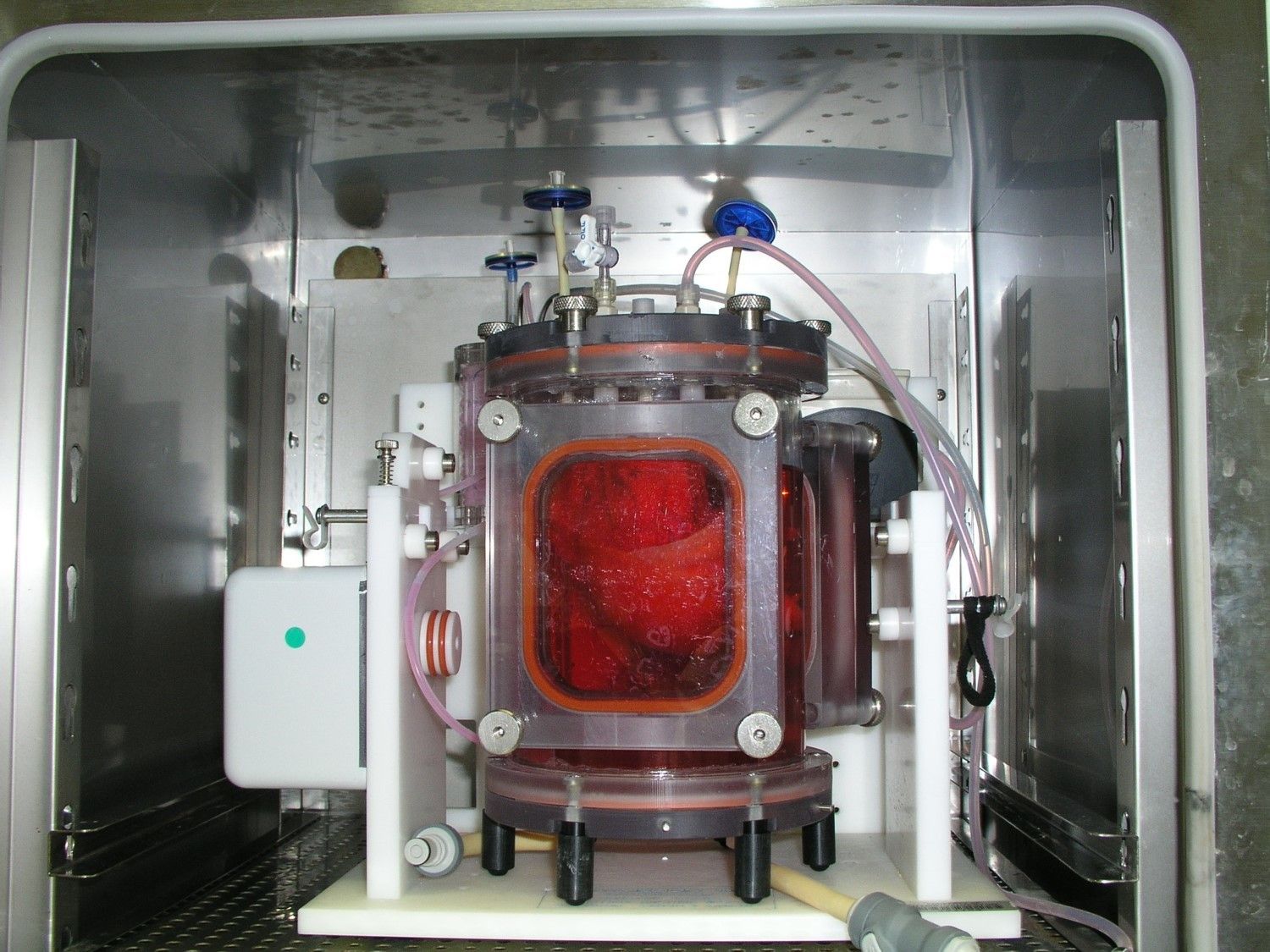
It's not unheard of for people to die while waiting for lung donations—there are not enough organ donors who are a tissue match for everyone who needs one. And even when someone gets a transplant, there is a high rate of failure. Scientists are in a race to solve some of these problems by learning to grow vital human tissues in laboratories.
At the University of Texas Medical Branch, researchers figured out how to grow human lungs in 2014. Now, results from another round of trials show that they have successfully transplanted lab-grown lungs into pigs. This means that scientists are that much closer to using this technology in humans, too.
"This is a method to produce lungs for people who might need them," researcher Joan Nichols told Newsweek. She is the lead author of the new study, published Wednesday in Science Translational Medicine.

To do their experiment, the scientists had to get creative. They bought fish tanks and plumbing from Home Depot to build a place for the organs to live.
The scientists then used harvested pig cells on scaffolding in a soupy liquid solution. Then, they waited and watched. The cells needed constant care and attention over a 30-day period. Scientists took turns babysitting the organs, making sure that they were just the right temperature in their incubator, and had the exact nutrients that they needed to thrive.
Pigs were used because of their large chest cavities. Once the transplants were completed, the researchers watched as the new lungs developed inside the animals. A few of the pigs died of surgical complications, but those that lived were healthy, and breathing normally, said Nichols.
Lung transplants are needed for a variety of reasons, but this research was primarily inspired by babies born with developmental disorders.
Scientists were particularly moved by a condition known as diaphragmatic hernia, in which a fetus' diaphragm doesn't form, and the intestines move up into the chest cavity and stunt the growth of the lungs.
"In really severe forms of this, the baby dies as soon as it is born. There is nothing that you can do," Nichols said. There are no treatments for these cases and bioengineered lungs are the only things that could possibly save those babies.
Funding for studies like this one is often limited, and more research is needed, but the future looks promising for bioengineered lung transplantation.
"If we had good funding and better equipment, I think that we could have this ready for first use between five and 10 years," Nichols said.
Uncommon Knowledge
Newsweek is committed to challenging conventional wisdom and finding connections in the search for common ground.
Newsweek is committed to challenging conventional wisdom and finding connections in the search for common ground.
About the writer
Lisa Spear is a science writing fellow at Newsweek. She's previously contributed to a number of other outlets including Time and ... Read more





